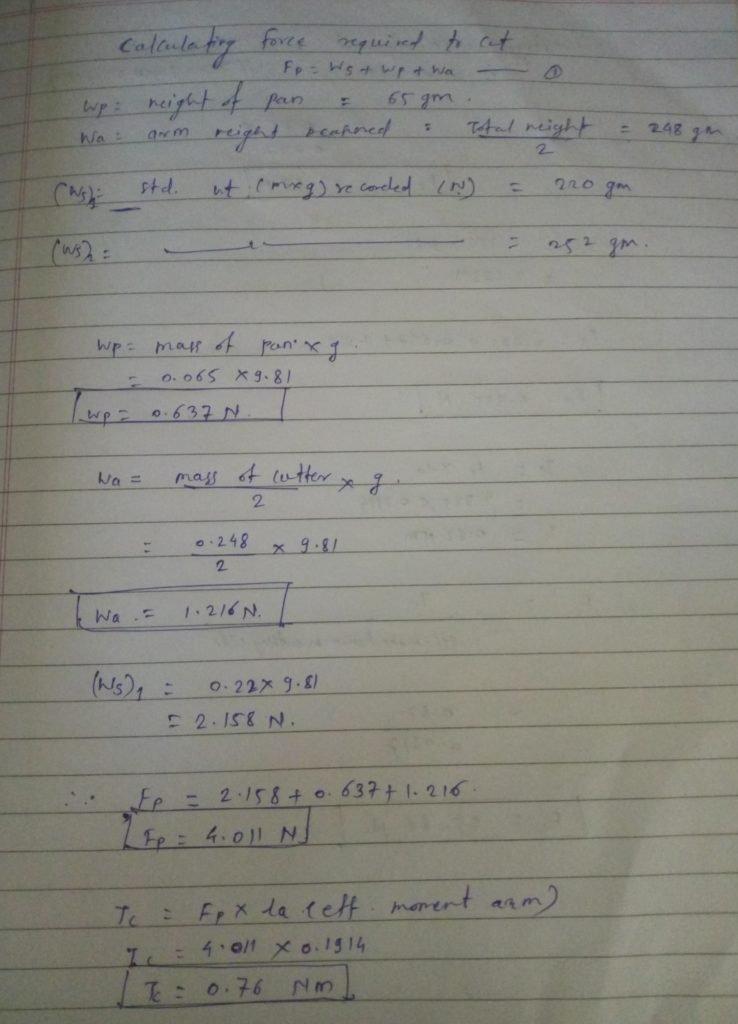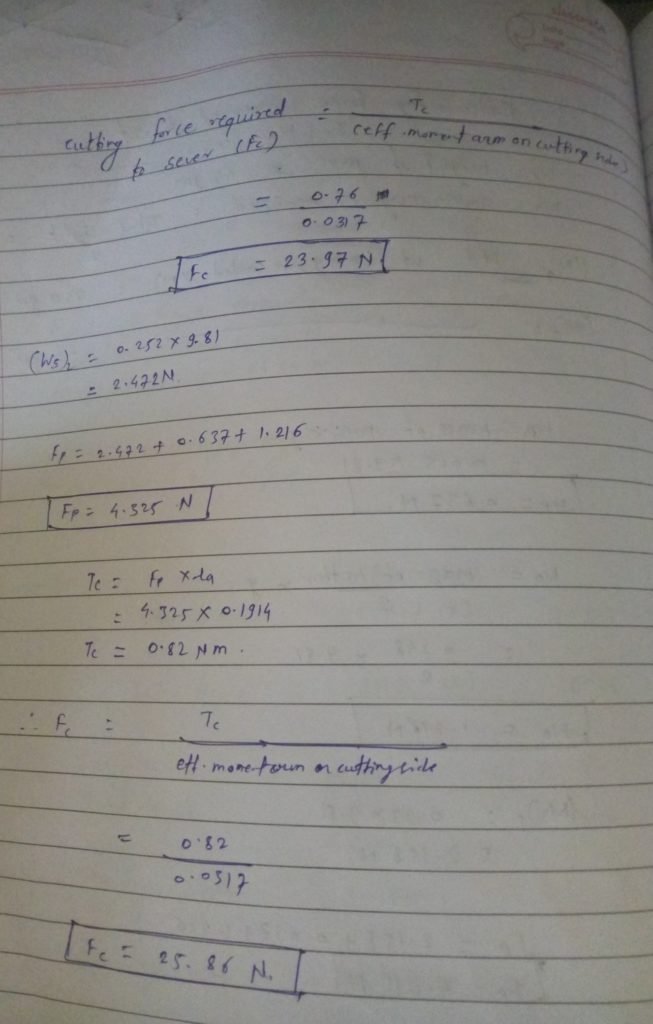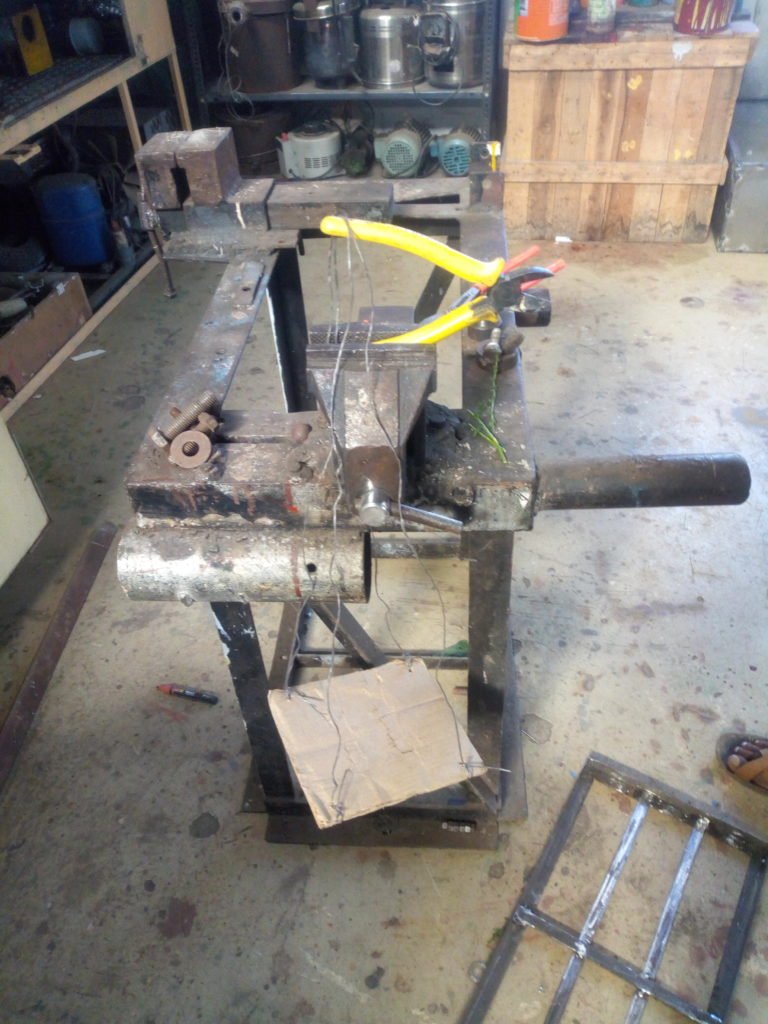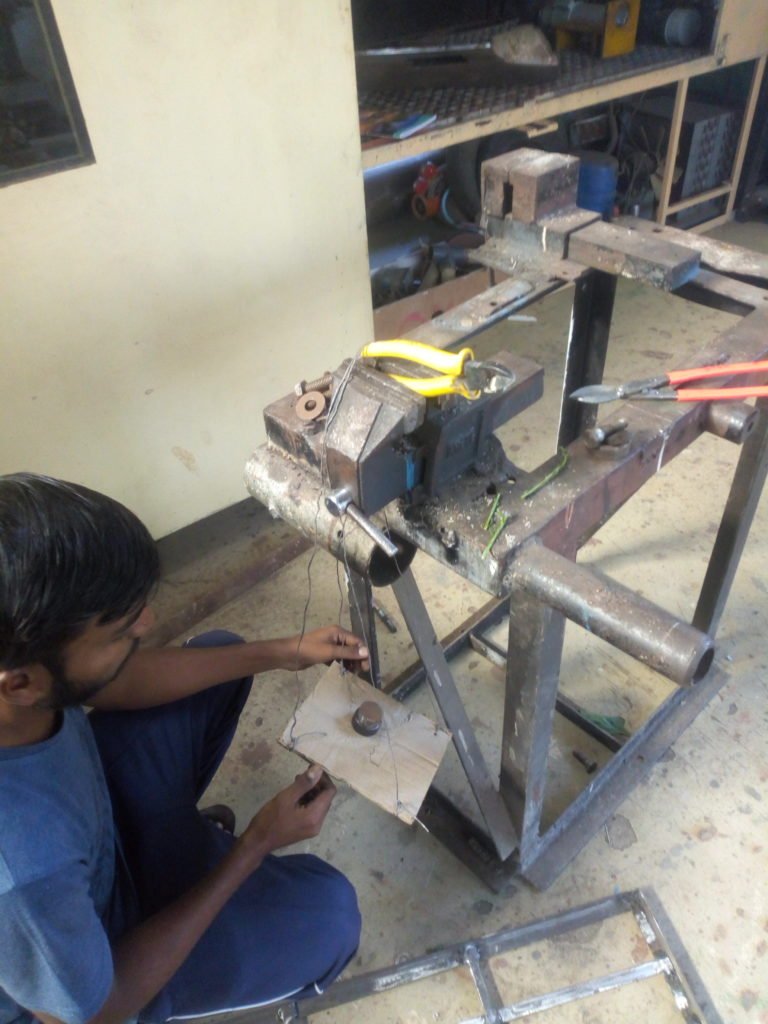The force required to cut stalks of vegetable fruits is not readily available. Therefore it become necessary to determine the cutting force experimentally. The setup of experiment consists of
- cutter
- pan
- std masses
- stalk samples
Setup:
- A one arm of cutter is fixed in vice and another one is free to rotate about the joint of the cutter.
- Pan is suspended with the help of string tied to free arm of cutter.
- The pan serves the purpose of holding the mass loaded in steps until the stalk gets cut.
Procedure:
- Two samples are used to determine the cutting force.
- once the stalk is fed std masses are loaded in the pan step by step.
- The load at which the stalk gets cut into two is recorded.
- Above steps are repeated for each sample stalk.
- Force (Fp) obtained is at the point where string is tied to the free arm of cutter and not the actual cutting force.
- Force (Fp) is sum of weights of std mass in the pan, weight of the pan, weight of free arm of cutter (approximately determined as the half of the cutter weight).
- In order to estimate the actual cutting force(Fc) the cutting torque (Tc) is to be calculated.
- Cutting torque is torque applied by the cutter, weight system.
- Stalks which is to be cut are fed into cutting portion of the cutter.
- It should be noted that arm weight and weight of pan are constant throughout the experiment.
- Cutter used in the experiment is weighted on electronic weighing machine and arm weight is considered to be half of weight of cutter.
- On the same weighing machine mass of pan is measured.
Calculation:


Experimental Setup:


Conclusion:
From the above calculation we can conclude that the cutting force required to cut the chili stalk is 25.86 N.




